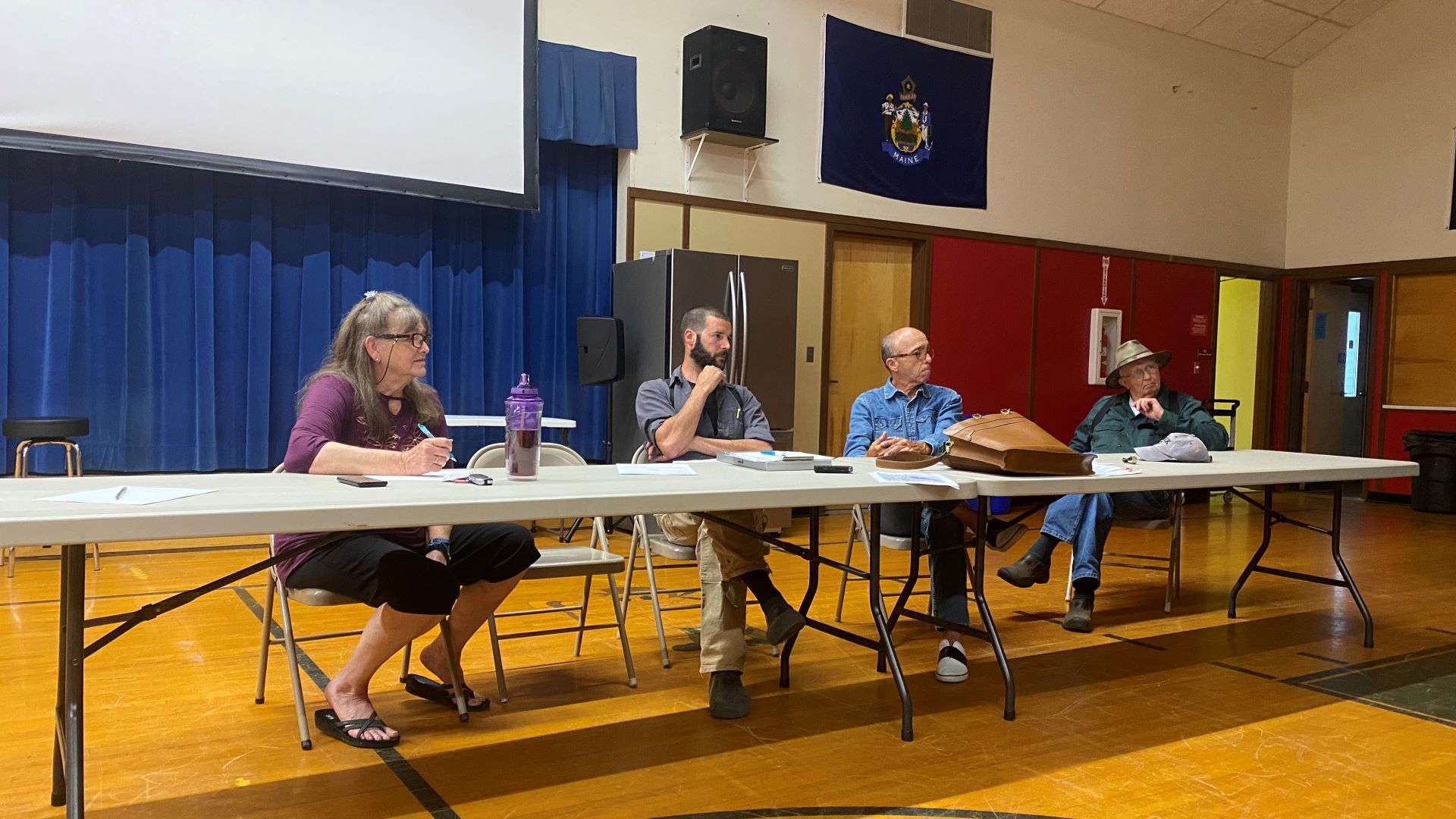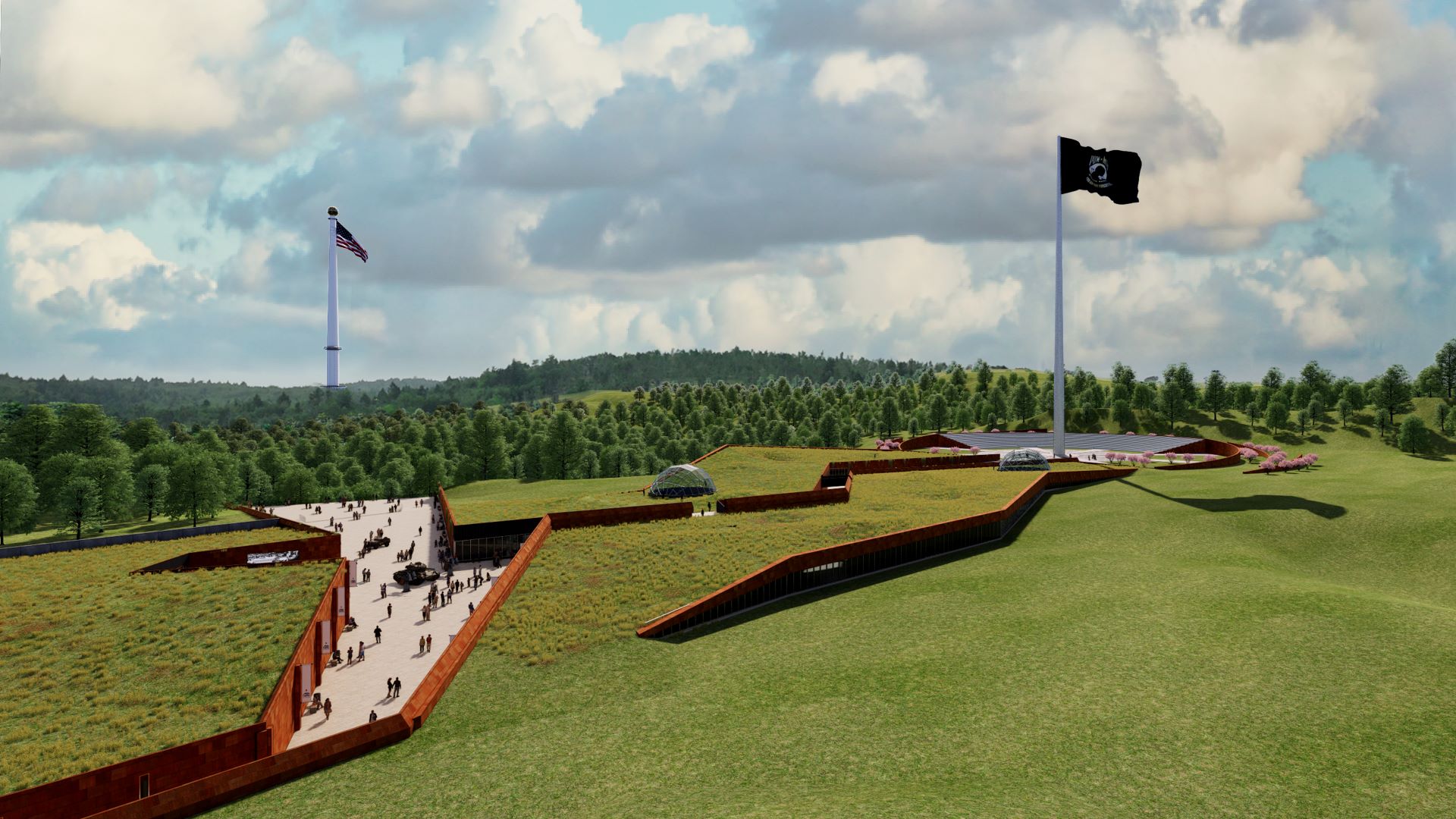This spring, we partnered with The Boston Globe to write the latest chapter in a months-long saga on Flagpole of Freedom Park, a 2,500-acre development proposed for the woods of Washington County, just north of the sleepy hamlet of Columbia Falls, population 476.
The story, which I wrote with Globe reporter Spencer Buell, ran in The Maine Monitor and on the front page of the Globe in late March.
The ambitious plans for the development had been unveiled a year earlier by the Worcesters, the prominent Washington County family behind Wreaths Across America and Worcester Wreaths. The park, which would center around the world’s tallest flagpole, would essentially function as its own municipality, with dedicated fire and emergency services on the premises, hiking trails, eight miles of loop roads, gondola lines, several villages, campgrounds, a hotel, 4,000-seat theater, chapel, restaurants and shops.
At the center of it all, a flagpole taller than the Empire State Building, boasting 100-mile views in every direction from several glass observation decks.
The Worcesters said the park would cost more than $1 billion to build and eventually attract 6 million annual visitors. It would be serviced by thousands of employees, many working year-round.
The project, anchored by the world’s tallest flagpole, was aimed at honoring veterans, and in a nod to its main attraction, would be known as “Flagpole of Freedom Park.”
The Monitor first learned of these plans after the Worcesters announced their intent in late March 2022, at an event covered by local media organizations, including The Ellsworth American. But while the reports contained lofty aspirations, most lacked specifics.
How did the Worcesters plan to attract 6 million annual visitors, more than nearby Acadia National Park? Where would the thousands of employees live, given that the region was already struggling with a housing crisis? How would the roads handle such an increase in traffic?
To get some answers we started making calls — to the Worcesters themselves, and to local officials who would be tasked with overseeing the plans.
At the family’s invitation, the Monitor spent more than three hours interviewing Rob Worcester, son of Wreaths Across America founder Morrill Worcester, discussing the project and exploring the land on which it would sit.
We went to planning board meetings in Columbia Falls, where residents asked probing questions, and reviewed videos and documents provided by the Worcesters outlining their plans.

During our reporting in 2022, we found that lawmakers had hastily passed a bill in emergency session that would allow Columbia Falls to annex the land on which the Worcesters wanted to build, which was under the jurisdiction of the state Land Use Planning Commission.
We listened to the hearing on the bill, and requested records on all annexations approved by the legislature from the Maine State Legislature’s Law and Legislative Reference Library. We analyzed the records and found that in the past 40-odd years, lawmakers had approved all but two boundary change bills that had come before them.
But a close reading of the bill revealed that it was unlike those other annexations; it stripped protections designed to ensure a municipality’s ordinances are at least as stringent as what the LUPC has in place. It was also unusual that it was proposed by a single resident, Morrill Worcester, rather than a municipality looking to incorporate existing development, as is typically the case.
None of this had been included in news reports.
The Monitor published its first story on the plans in June 2022. After the piece came out, plans for the park attracted increasing attention from media outlets around the world. We continued periodic reporting on the project, including stories on a series of cabins Worcester Holdings built on the land without proper permits.

For the partnership with the Globe earlier this year, we re-interviewed planning board members, and state and local officials, requested financial records from Columbia Falls to understand what had been spent on reviewing the annexation plans, and went door-to-door to get a sense of how people in the area were feeling, spending hours in their homes discussing the project.
This year, voters in Columbia Falls approved hitting pause on large-scale development projects, a moratorium that has been extended into next year and applies to the Flagpole project.
In the meantime, a website associated with the park is down, and its social media pages haven’t been updated in months. The Worcester family has been largely silent on the plans since a flurry of publicity last year, although they have said they will return money to those who donated.
This is an ongoing story the Monitor continues to follow. Reporting on the park was made possible with support from Report For America.







